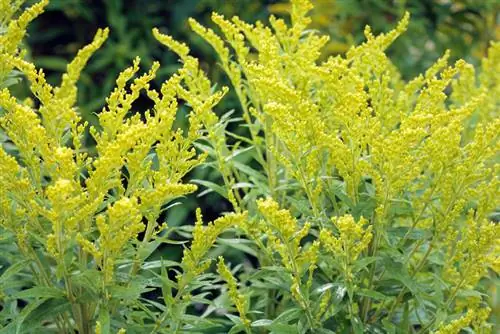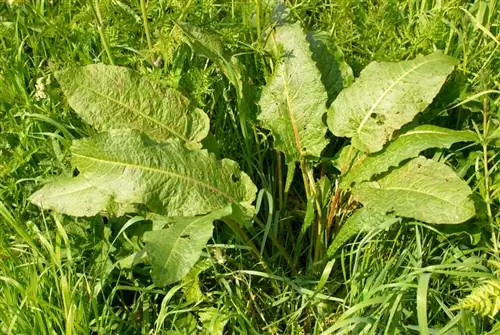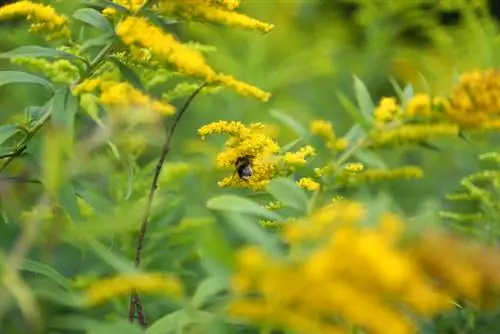- Author admin [email protected].
- Public 2023-12-16 16:46.
- Last modified 2025-01-23 11:20.
The Canadian goldenrod, along with the Indian balsam, is one of the plants that have become a real threat to the local flora. In order to prevent further spread of the Canadian goldenrod, permanent control is necessary.

How do you fight Canadian goldenrod?
To successfully combat Canadian goldenrod, you should prevent seed formation, cut the plants regularly, dig up the rhizomes and cover affected areas with foil. Long-term control requires consistent measures for several years.
That's why Canadian goldenrod needs to be controlled
The plant is native to North America and was introduced to Central Europe as an ornamental plant. It can be found in many gardens and is valued there for its pretty yellow flower spikes, strong growth and suppression of other plants.
It is precisely these characteristics that make the Canadian goldenrod a problem in nature. The ornamental plant also spread in the wild and displaced native plants. The nutritional value of their nectar and pollen is lower than that of native species, causing additional harm to bees and bumblebees.
Methods for controlling Canadian goldenrod
- Prevent seed development
- Cut plants short regularly
- Dig up rhizomes
- Cover the surface with foil
The control of Canadian goldenrod is complex and takes several years. The plant reproduces via seeds and underground runners.
First, the formation of seeds must be prevented. To achieve this, areas where Canadian goldenrod grows are mown in a timely manner. Digging up the rhizomes only makes sense for small populations.
As a result, regular mowing is urgently necessary, as this is the only way to weaken the rhizomes and prevent them from forming new runners. Affected areas must be cut at least two to three times a year. The cuttings should be removed to make it easier for native plants to resettle.
Re-sow fallow land immediately
Canadian goldenrod is a so-called pioneer plant that particularly likes to spread in fallow areas.
One way to prevent this is to work on fallow land as soon as possible and sow it with meadow herbs or other fast-growing native plants. Alternatively, a foil can be applied.
Wear gloves when controlling Canadian goldenrod
Canadian goldenrods cause contact allergies in sensitive people due to the sap they release. Gloves should therefore always be worn when fighting.
Tip
Like all goldenrod species, the Canadian goldenrod is not poisonous. It is even considered a medicinal herb. The Germanic peoples already appreciated their healing effects on wounds, rheumatism and gout.






